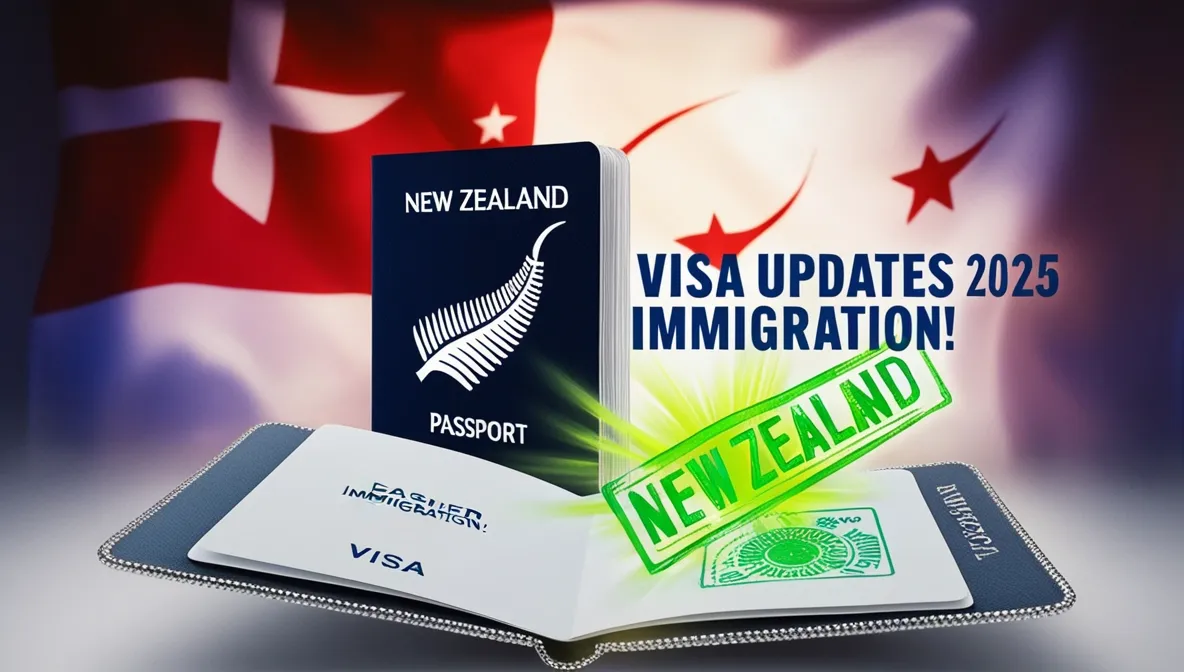New Zealand has introduced sweeping changes to its visa policies, designed to attract skilled workers and simplify the immigration process. Key updates include removing average salary requirements for certain work visas, reducing experience requirements from 3 years to 2, and extending work visas for low-skilled jobs to three years. Seasonal workers now have access to two new visa pathways, ensuring more flexibility in meeting labor demands.
Read Also: 20 Best Lithuania Visa Sponsorship Jobs for Foreigners (Hiring Now)
For migrants with families, the new earning threshold for bringing dependents is set at NZ$55,844 per annum, ensuring financial stability. Additionally, temporary work rights for visa applicants will be extended from April 2025, offering job security while waiting for visa approval.
New Zealand Announces Major Visa Updates to Make Immigration Easier
| Country | New Zealand |
|---|---|
| Elimination of Average Salary Requirements | Employers no longer need to meet minimum wage requirements for AEWV and SPWV jobs. |
| Earnings Threshold for Dependents | AEWV holders must earn at least NZ$55,844 annually to bring dependents to New Zealand. |
| Reduced Experience Requirements | Minimum work experience reduced from 3 years to 2 years for qualified workers. |
| New Pathways for Seasonal Workers | 3-year multiple entry visa for experienced workers. |
| Extended Duration of Work Visas | Low-skilled job visas extended to 3 years, with an additional 1-year extension option. |
| Simplified Recruitment Process | Employers no longer need to comply with a mandatory 21-day engagement period for hiring. |
| Temporary Work Rights Expansion | From April 2025, work rights will extend to AEWV applicants transitioning from other visas. |
| Simplified Compliance for Employers | Online training modules replaced with easy-to-access employment rights resources. |
| Reduced Local Workforce Quota for Construction | Local labor requirement reduced from 35% to 15% for construction sector jobs. |
Read more: New Zealand Launches New Work Visa for Skilled Workers Salary $20–$60 Per Hour
Eliminate Average Salary Requirements
There is no longer a minimum wage requirement for jobs under Approved Employee Work Visas (AEWV) and Specific Purpose Work Visas (SPWV). However, employers are still required to advertise jobs and pay the prevailing market wage according to the job and region.
Note: These changes do not affect existing employment agreements or salary requirements for residence visas.
Earnings Limit Update for Immigrants with Dependents
Approved Employment Visa (AEWV) holders who wish to bring their children to New Zealand must earn at least NZ$55,844 per annum. This threshold is intended to ensure financial stability for families.
Reduce Experience Requirements for Immigrants
The minimum work experience requirement has been reduced from three years to two years. This change provides greater opportunities for qualified workers and addresses the labor shortage highlighted in public consultations.
New Pathways for Seasonal Workers
New Zealand is offering two new pathways for seasonal workers to meet demand:
- Three-year multiple entry visa for experienced workers.
- Single entry visa for seven months for less skilled workers.
Current pathways for temporary seasonal workers will remain in effect until these changes come into effect.
Extending the duration of work visas for low-skilled jobs
Visas for jobs classified as Levels 4 and 5 in the Australian and New Zealand Occupation Classification Standard (ANZSCO) have been extended to three years from two years. Workers can now apply for a one-year extension if they meet the requirements.
Simplify the local recruitment process
Employers advertising low-skilled jobs no longer have to comply with a mandatory 21-day engagement period with the Department of Labor. This allows for greater flexibility in the hiring process.
Strengthening temporary work rights for migrants
From April 2025, temporary work rights will be extended to Approved Employment Visa (AEWV) applicants who transfer from any type of work visa or student visa with work privileges.
Simplifying compliance requirements for employers
From January 2025, approved employers will no longer be required to complete online training modules. Instead, Immigration New Zealand will provide easy-to-access resources on employment rights and responsibilities.
Reducing the local workforce limit for the construction sector
In a move to support the construction sector, the minimum percentage of local labour required has been reduced from 35% to 15%.
What these changes mean for migrants and employers
These updates represent a major shift in New Zealand’s approach to immigration, opening wider doors for migrants and simplifying processes for employers.
To verify the source of this news, you can visit the official website of the Department of Immigration New Zealand or check the latest updates on the Immigration New Zealand website . Reliable information on changes to immigration laws can be accessed through the following link:
FAQ
1. What is the main benefit of removing median salary requirements?
Removing these requirements gives employers more flexibility to set salaries based on the market, making it easier to hire qualified workers.
2. Do the updates affect residence visas?
No, the salary requirements for residence visas remain unchanged.
3. How can seasonal workers benefit from the new visas?
Experienced workers can obtain multiple-entry visas for three years, while less skilled workers can benefit from seven-month visas.
4. What do the new temporary work rights mean for migrants?
These rights ensure that migrants can continue to work while waiting for their visa applications to be approved, providing them with job stability.
5. How will the changes impact the construction sector?
Reducing the minimum local employment ratio will help address the construction sector’s labor shortage, facilitating hiring and boosting productivity.
Notice: This article is only for informational purposes. We are not a Visa agent nor a consulting service, we just spread the job opening alert.
